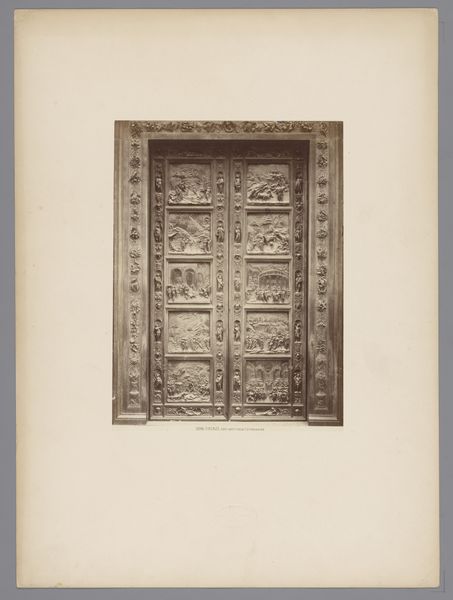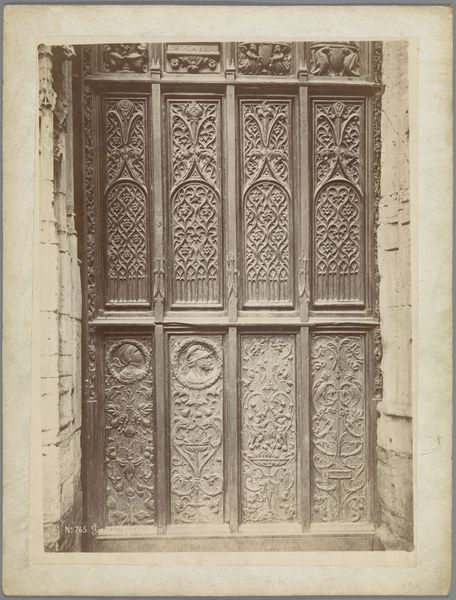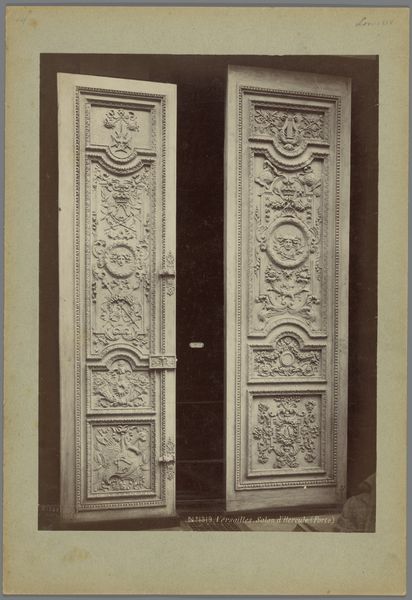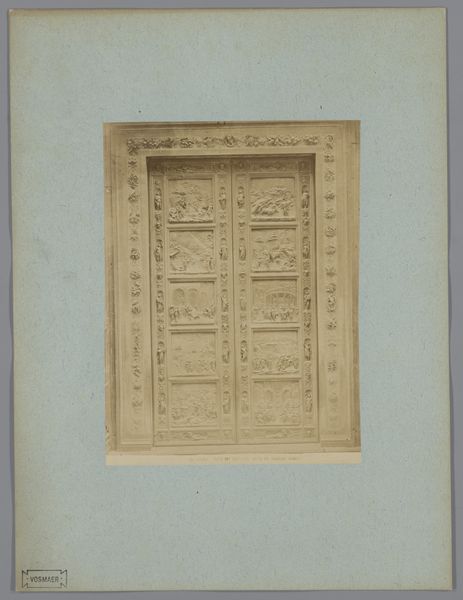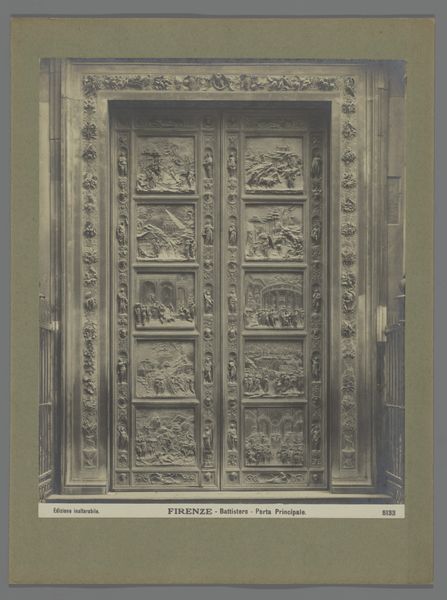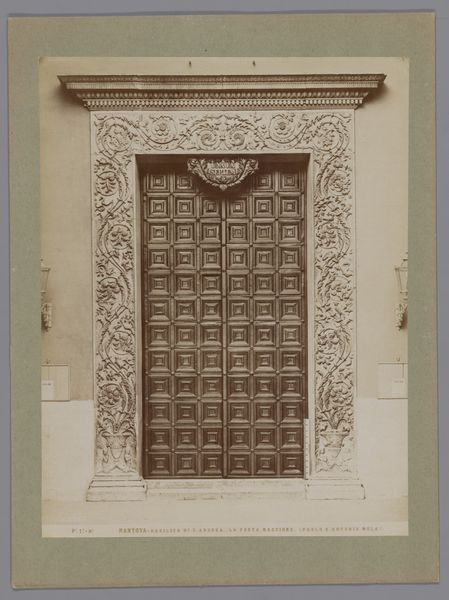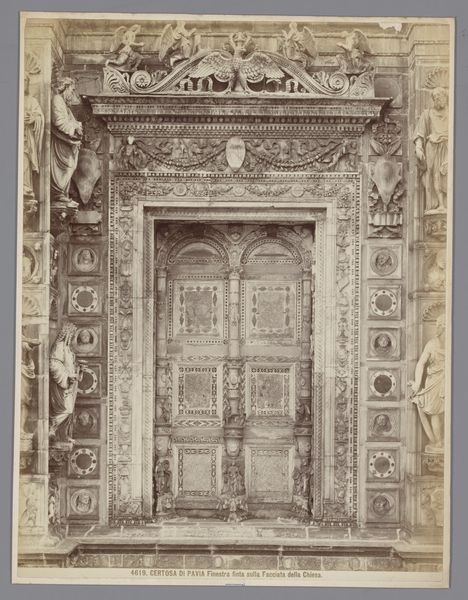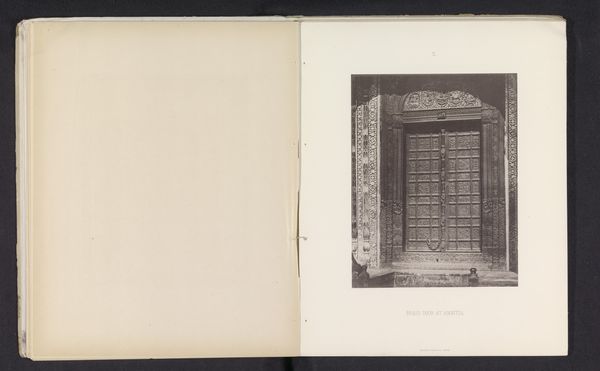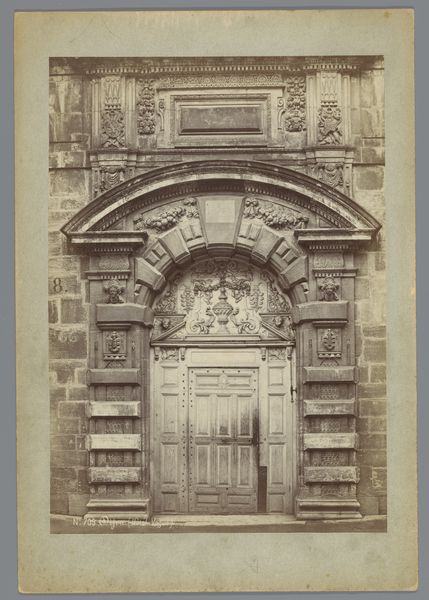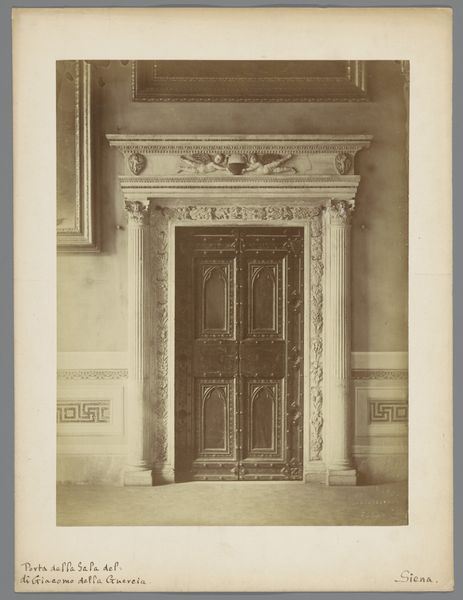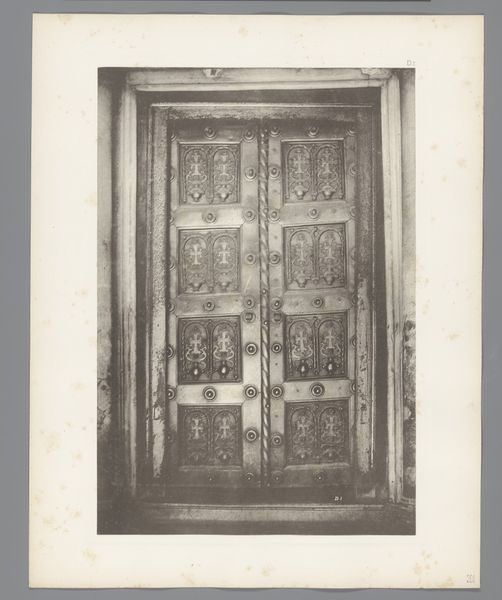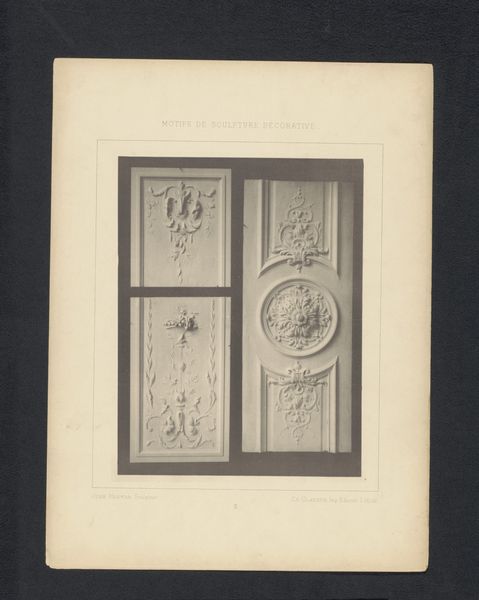
Bronzen deur van het Baptisterium van Florence naar Lorenzo Ghiberti, Italië 1863 - 1914
0:00
0:00
print, relief, bronze, photography
#
medieval
#
narrative-art
# print
#
relief
#
bronze
#
figuration
#
photography
#
geometric
#
history-painting
#
italian-renaissance
Dimensions: height 391 mm, width 274 mm
Copyright: Rijks Museum: Open Domain
Curator: Oh, my. The density of detail is astonishing! It feels ancient, and incredibly imposing. The geometric design fights so wonderfully with the lively scenes playing out in the reliefs, doesn’t it? Like order containing chaos. Editor: That’s a great starting point! What we are looking at is a photographic print of the bronze doors of the Baptistery in Florence. The photograph, created between 1863 and 1914 by Giorgio Sommer, captures what were nicknamed “The Gates of Paradise.” They’re remarkable examples of Italian Renaissance art and craftsmanship. Curator: “Gates of Paradise”, indeed. Look at how each panel bursts with life—scenes teeming with figures enacting stories. Can you even imagine the amount of work that went into sculpting each relief? And casting them in bronze! My hands ache just thinking about it. Editor: It’s immense labor, but labor used to promote very specific ideals, wouldn’t you agree? The Duomo of Florence was an extremely important location. Ghiberti spent decades working on these doors. They weren't just decorative; they served to impress upon the Florentine population and visitors the significance of the Church's teachings. Curator: Well, they continue to do just that. Even through the filter of a photograph, the narratives leap out. History almost pulsates, doesn't it? This particular photographic rendition also captures the tension—that constant push-and-pull between grandeur and granular detail. Editor: Yes, and to really expand upon that impact, photography began to play a crucial role. Figures like Sommer reproduced cultural heritage for consumption, further cementing cultural values. But this photograph strips them of the colorful gold that originally coated them. Curator: True, without the original colors and textures, the image adopts a ghostly air, becoming a shadow of the true artifact, but a shadow that echoes just as clearly through time! Editor: Precisely! We're left to grapple with the artistic values and institutional functions, then and now. I’d suggest that whether rendered in radiant gilt bronze or muted photographic tones, the gates urge us to confront and consider both faith and artistry through time. Curator: And perhaps it's through art—in any medium—that we begin to understand the power, as well as the limitations of faith, anyway!
Comments
No comments
Be the first to comment and join the conversation on the ultimate creative platform.
